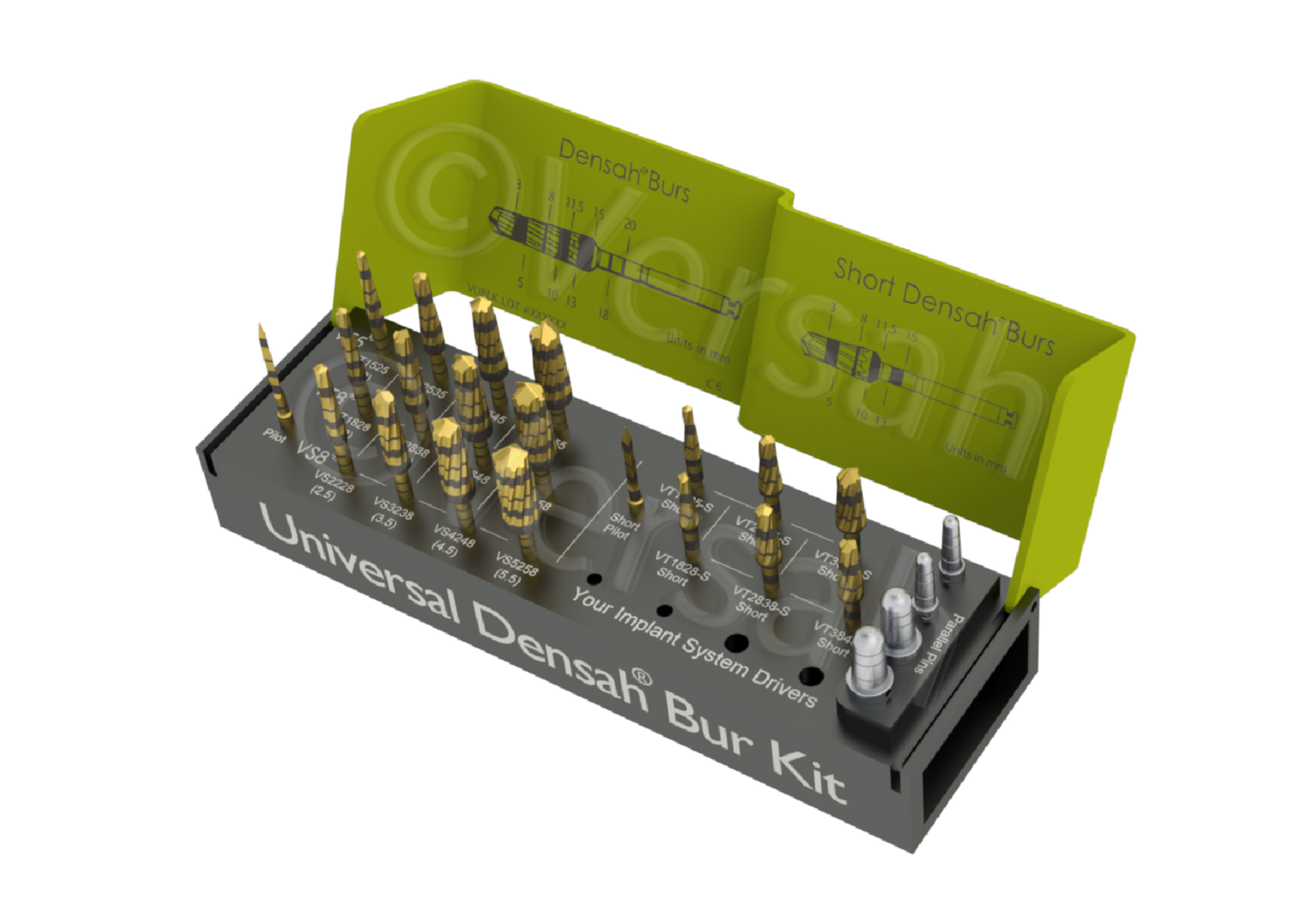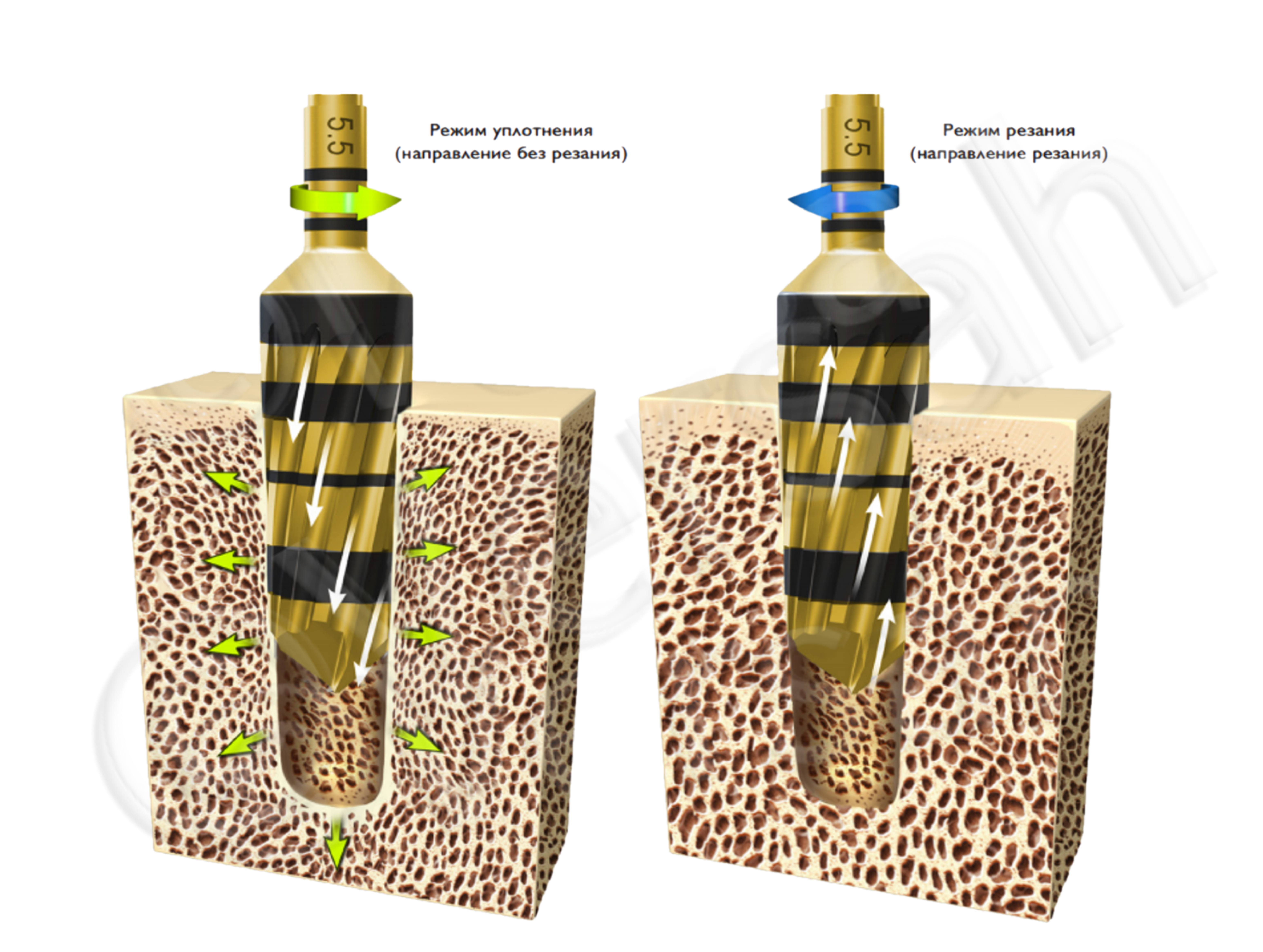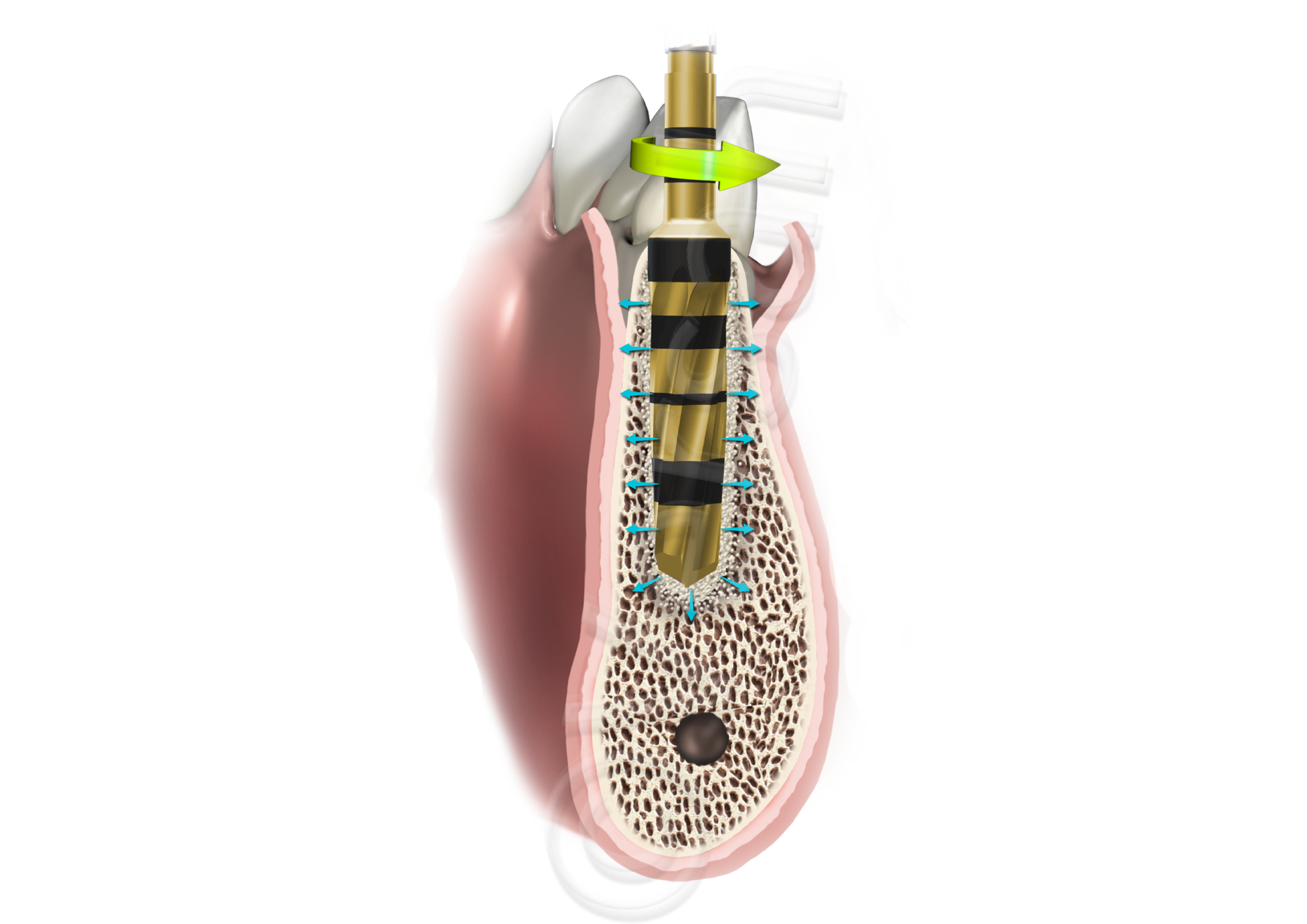ТЕХНОЛОГИЯ DENSAH

Технология бора Densah основана на новейшей биомеханической методике подготовки кости, которая называется «остеоденсификацией». В отличие от традиционных методик сверления, применяемых в стоматологии, при остеоденсификации костная ткань не вырезается. Вместо этого костная ткань одновременно уплотняется и подвергается аутотрансплантации в направлениях, расширяющихся кнаружи от остеотомии.
При вращении бора Densah с высокой скоростью в обратном резанию направлении при наличии постоянного внешнего орошения вдоль стенок и основания выполняемой остеотомии образуется прочный плотный слой костной ткани. Плотный слой утрамбованной костной ткани образует более прочное основание для имплантатов и может способствовать ускоренному заживлению.
читать далее оставить заявкуУНИКАЛЬНЫЕ ХАРАКТЕРИСТИКИ
Обычные винтовые сверла или прямые желобчатые сверла имеют 2–4 фаски, с помощью которых они продвигаются вглубь остеотомии. Боры Densah имеют 4 фаски и более, которые делают их продвижение сквозь кость крайне точным. Чем больше фасок, тем меньше возможность вибрации.
Во время остеоденсификации боры Densah подвергают кость контролируемой пластической деформации, которая делает возможным создание остеотомии цилиндрической формы без вырезания костной ткани.
видео инструкция
ВАРИАНТЫ ПРИМЕНЕНИЯ

- Боры Densah предназначены для подготовки остеотомий под установку стоматологических имплантатов в верхней или нижней челюсти.
- Пилотное сверло используется для создания начального отверстия в кости для подготовки остеотомии под установку стоматологического 2. имплантата и мониторинга глубины сверления.
- Параллельный штифт используется в качестве параллельной направляющей с борами Densah.